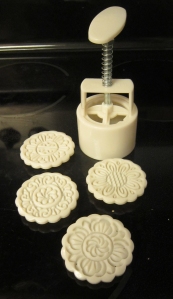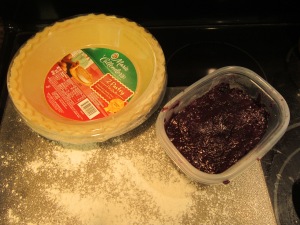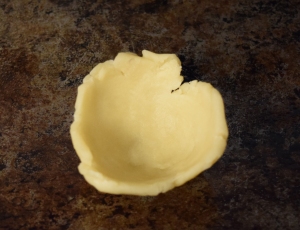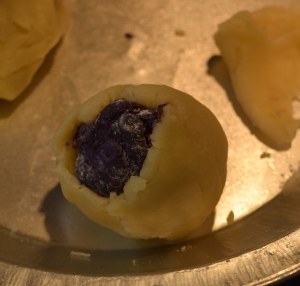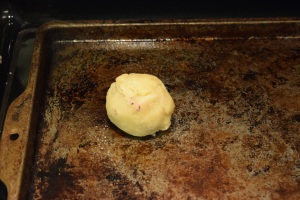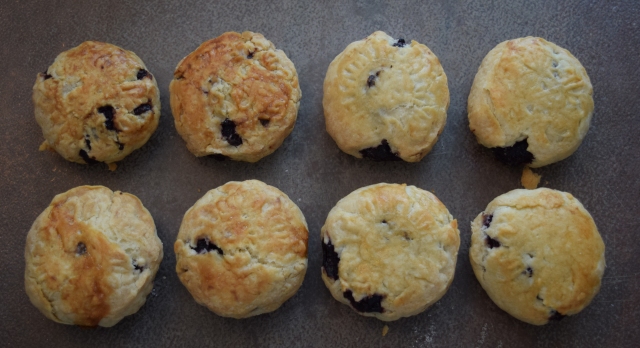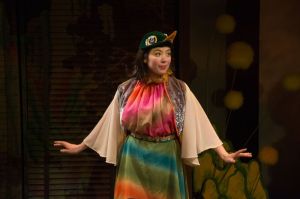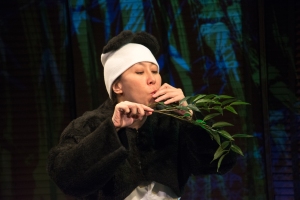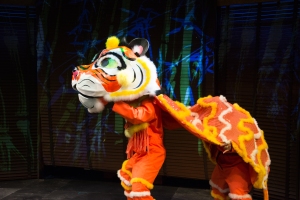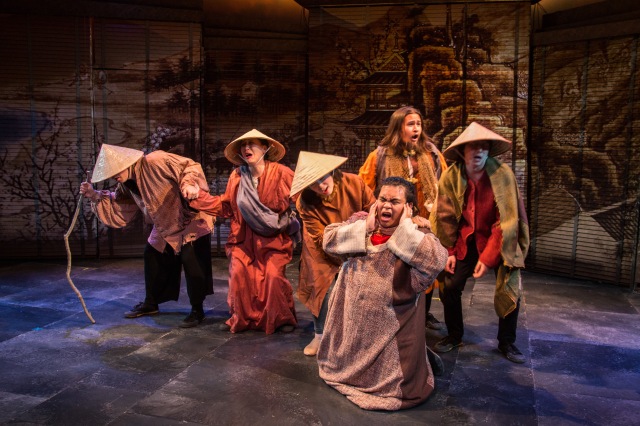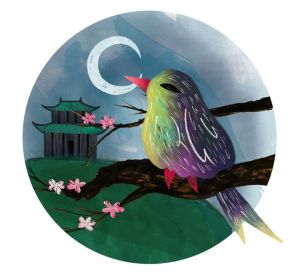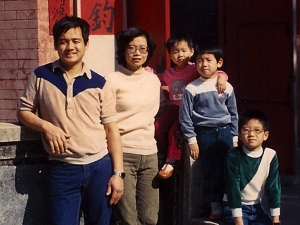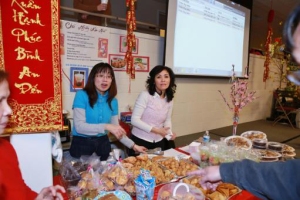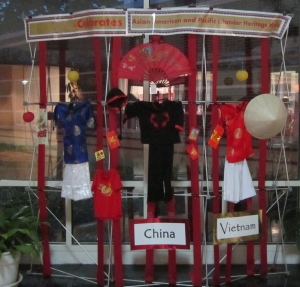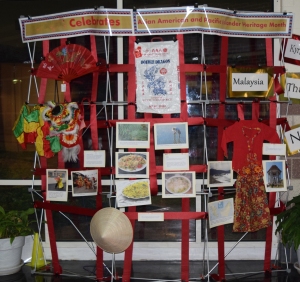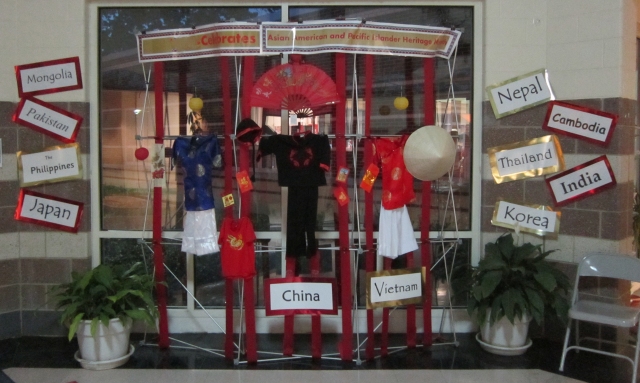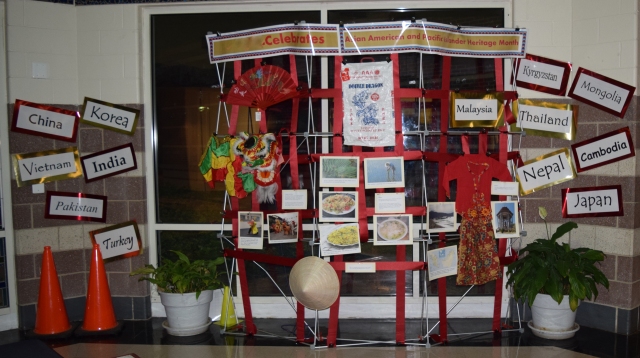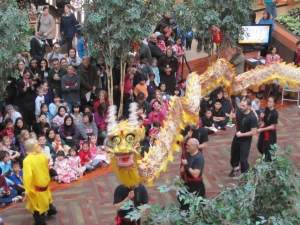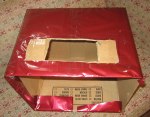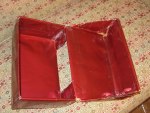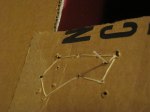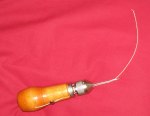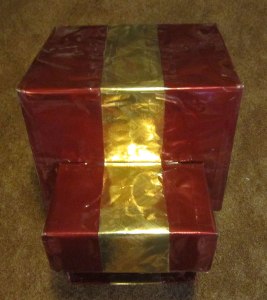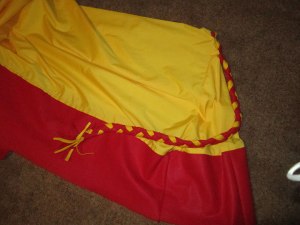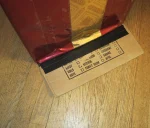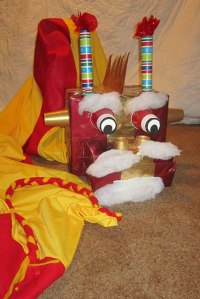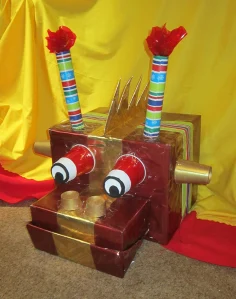 When I started writing this lesson plan, I had decided to change books this year, and I wrote a review of some of my considerations. But then when I checked with the teacher, she said I was welcome to do a presentation, but she had to check with the principal.
When I started writing this lesson plan, I had decided to change books this year, and I wrote a review of some of my considerations. But then when I checked with the teacher, she said I was welcome to do a presentation, but she had to check with the principal.
I said I needed 40 minutes for a presentation and 20 minutes for eating. The principal said I could have 30 minutes. And I was scheduled before lunch, so I could not go over. I guess in public school, there is nothing more important than learning what is on the curriculum.
So now everything was time dependent. The first thing I did was get rid of the eating part, that was 20 minutes. The second thing I cut was any talk about adoption. That was about 5 or so minutes. And then I nixed the last 5 minutes where I got out Vietnamese toys and showed them to the children.
Then I realized I wasn’t going to have time to do any participation like I have done in past years, especially because I was going to talk more about the traditions and include more on the moon. So I decided I would get out all my props and hand them out and that would be the participation.
I listed all the props I own to help me come up with the presentation.
I also made a dragon for a whole class dragon dance, so I had to allow 5 minutes for that.
The third thing I had to do to shorten my presentation was to make sure I picked short and sweet books, nothing with too many words. So even after I planned on changing books, I ended up back with “Lanterns and Firecrackers” and “Bringing in the New Year”.
Out of the props I own, I then picked some to hang up for decorations (Chinese lanterns and Oriental Trading Company Spring Happiness Poems). Then I picked the top 18 things I wanted to use a props, as there are 18 students in his class.
Most of the puppets got nixed. I decided some of the props were too fragile to hand out, so I would show them myself.
Preparation
Buy
- Buy chocolate coins (I got mine at Christmas at Costco)
- Buy lucky red envelopes (Asian store or Oriental Trading Company)
- Buy a bag of mandarin oranges
Gather Things I have on Hand
- Red bowl (for oranges)
- inflatable globe
- 2 Chinese noise makers (bought in Chinatown)
- 2 Vietnamese frog noisemakers (bought in Vietnam)
- another Vietnamese noisemaker
- silk peach blossom
- Spring happiness poems to hang up (Oriental Trading)
- Spring happiness poem in Chinese (from Chinese store)
- puppets (dog, pig, tiger, horse, sheep, dragon, horse, snake, ox)
- Lion Dance marionette puppet (bought at Eden Center)
- boy Vietnamese traditional clothing and hat (bought from Vietnam or Tet festival locally)
- girl Vietnamese traditional clothing (bought at consignment sale)
- boy Chinese traditional clothing (bought at Asian festival)
- lucky red envelopes (Asian store or Oriental Trading Company)
- 2 Vietnamese lanterns for children to carry during lantern parade (bought at Mid-Autumn Moon Festival)
- Chinese Lanterns (from Chinese store)
- Child’s Lion Dance costume (from Vietnam culture camp)
- homemade laughing Buddha mask
- bowl of oranges
- 2 sets of fake firecrackers, one homemade, the other bought at Tet festival and bubble wrap
Getting Ready for the Presentation
- Put two chocolate coins in each red envelope, label with child’s name.
- Determine Chinese Zodiac animal for each child
- Ask teacher if there is a globe to use or bring a globe. I have a beach ball globe I bring.
The teacher made a list of which students were born in the year of the pig and which were born in the year of the dog. I had given her the dates from the Chinese Zodiac entry in Wikipeida. That way she did not have to give me the birth dates for the students.
Then I made notes of what props I could show during the reading of the books. I put post-it notes on the pages to remind me what I was going to show, or ask students to show.
The Presentation
I got there half hour early (before school) to put up decorations and arrange my props. In one area for stuff I was showing and another area for stuff I was handing out.
Kids stayed in their seats instead of sitting of the rug mostly because they would be able to see from their seats and my stuff was taking up much of the rug in front of me.
Part 1 – Lunar New Year Names
I explained that Lunar New Year, was called Chinese New Year, Tet (in Vietnam), and in other countries they would have another name for it. So I was sticking with Lunar New Year, so we could include all the countries who celebrate it. In China, Chinese New Year is also known as “Spring Festival”.
Part 2 – Where do they Celebrate it?
I used my globe to locate where our home is and on the other side of the world is China, Vietnam and other countries which celebrate it. I explained how in China, Vietnam, Mongolia, Japan, Tibet, and Korea that everyone celebrates the holiday. I also explained how millions of people in other countries who have family from one of those countries celebrate Lunar New Year too. Millions of people celebrate it in the US and Canada. Then I asked who celebrated Lunar New Year at home of in the community. And for the first time four hands raised in my child’s class. (That was pretty awesome.)
I also showed the class where Vietnam is and explained that Danny was adopted from Vietnam at 7 months. There was no time to go into adoption. I explained how our family celebrates Lunar New Year (known as Tet in Vietnam) because Danny comes from there and we want to celebrate the holidays from his country along with the holidays from the US.
Part 3 – What is it?
Lunar New Year is a Spring Festival, the welcoming of spring, a chance to start over. We talked about what happens in the spring, (blossoms, new life). How in China it is cold when Lunar New Year is celebrated and they are welcoming the warm temperatures and new life. But in the south of Vietnam, it is warm all winter, but they still welcome the spring with Tet.
And in the countries where the whole country celebrates Lunar New Year, is is comparable to having a celebration of everyone’s birthday, New Years Day, Thanksgiving and the 4th of July all on the same day. We don’t have anything comparable in this country.
From here on out I am going to give you my outline. I am going to assume you have done other reading on Lunar New Year.
Part 4 – Why is it called Lunar New Year
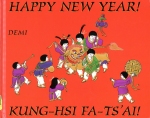 For my discussion of Lunar New Year, I included quite a bit about moon phases because in second grade in our school district they were studying the phases of the moon in school. In fact the children knew more about the names of the phases of the moon than I do. Besides using one of the drawings that came home with my child, I used the inside illustration of this book: “Happy New Year Kung-Hsi Fa-ts’ai!” by Demi. The book is out of print, but still available used.
For my discussion of Lunar New Year, I included quite a bit about moon phases because in second grade in our school district they were studying the phases of the moon in school. In fact the children knew more about the names of the phases of the moon than I do. Besides using one of the drawings that came home with my child, I used the inside illustration of this book: “Happy New Year Kung-Hsi Fa-ts’ai!” by Demi. The book is out of print, but still available used.
- Lunar means Moon.
- Start date of the holiday is governed by the moon.
- Phases of the Moon
- Holiday starts on New Moon
- Ends on Full moon
- Preparation before New Moon
- Lunar New Year 2015 was actually Feb 19, LNY 2016 is February 8.
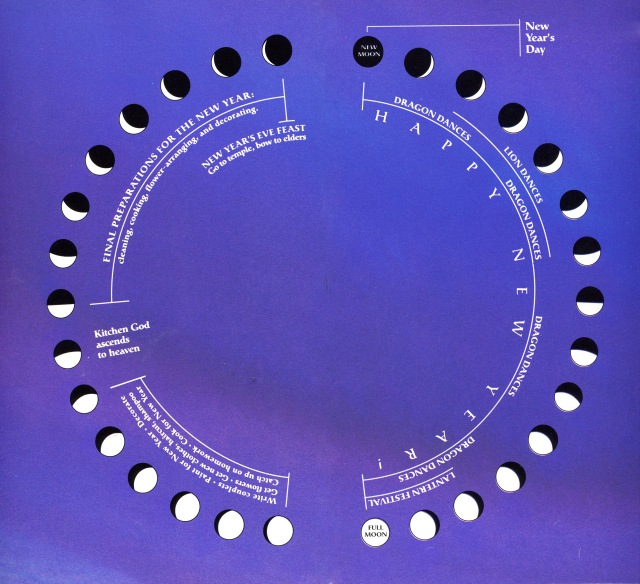
Part 5. – How long is the Celebration?
- 15 days (traditional)
- 3 days (modern)
- Big feast on New Year’s Eve
- There are community events for 1 month in this area
- I talked about where in the moon phase particular preparations went on, but I didn’t get into the kitchen God or anything like that.
Part 6 – Traditions Etc.
This is the part where we will talk about traditions. I handed out props, at least one to each child. And we read the two books.
- “Read Lanterns and Firecrackers” by Jonny Zucker
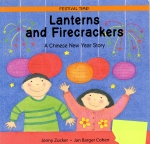
As I wrote earlier, I put post-it notes on each page that included a prop that I wanted to show or a tradition I wanted to explain. For example, on the first two pages, is a picture of a girl setting out flowers and a boy cleaning a mirror. There is a bowl of oranges in that picture. I had given out a bowl of oranges and my cherry blossom (fake flower). I explained the traditions of blossoms for New Years (representing new life and spring). And in my case in the north of Vietnam families use a peach blossom and in the south of Vietnam, families use plum, apricot or cherry blossoms. In our area, Vietnamese often use Forsythia as the blossom of choice. I ask the child who has my blossom to stand up and snow the blossom. I could also provide cards for the child to read, but I had very little time and decided that would take too much time. I asked the child to show the bowl of oranges and told the class: “Families put out a bowl of oranges for Lunar New Year. Oranges represent Luck and success and wealth.”
So I proceeded to explain traditions that were found on each page of the book.
2. Read “Bringing in the New Year” by Grace Lin.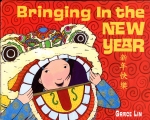
For the discussion of firecrackers, I had both cardboard fake firecrackers and bubble wrap, which I ask the student to step on to create the sound, (since they don’t let us bring real firecrackers to school).
Part 7 – Chinese Zodiac
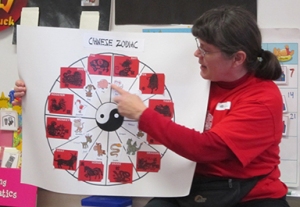 Chinese have a story that there is a race of animals. You can read this online. But I just mentioned it as I didn’t have time to dwell. All animals raced and the first 12 represent a year on the zodiac calendar. The rat came in first so that is the first year of the Chinese Zodiac. Here is the order of animals. I have my homemade poster of the Chinese Zodiac to show the order of the animals. Instructions for how to make it are here. If I had the time I would have shared this video of The Story of the Chinese Zodiac. It is only three minutes and really well done, but my time frame was too tight to include it.
Chinese have a story that there is a race of animals. You can read this online. But I just mentioned it as I didn’t have time to dwell. All animals raced and the first 12 represent a year on the zodiac calendar. The rat came in first so that is the first year of the Chinese Zodiac. Here is the order of animals. I have my homemade poster of the Chinese Zodiac to show the order of the animals. Instructions for how to make it are here. If I had the time I would have shared this video of The Story of the Chinese Zodiac. It is only three minutes and really well done, but my time frame was too tight to include it.- I have the kids recite the order of the animals from my poster.
- I discuss that the Vietnamese Zodiac is a little different in that the rabbit is replaced with a cat and the ox is replaced with a water buffalo.
- The teacher used this website to figure out which animal each child in the class fell into. In my son’s class part of the children were born under the pig and part were born under the dog. So I have two lists of names of the children, those which were born during the year of the pig and those born during the year of the dog. I talk about how each year is said to have certain characteristics. I use the text which briefly describes each animal from the last page of “Lion Dancer: Ernie Wan’s Chinese New Year“, but you can find the information all over the web. I just like the easy language that is used to describe the different characteristics. I talk about those two years and also the current year animal.
Part 8 – Dragon Dance
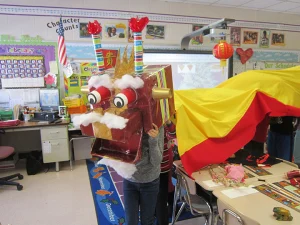
Dragon Dance in the Classroom
I wanted to have some participation, so I made a homemade Dragon using the instructions from “Chinese New Year for Kids” by Cindy Roberts. I wrote a post about making this dragon. There were about 17 kids in class and I got them under it and they marched around the room and had a fun time. If I wasn’t in such a rush, I would have gotten out my paper-plate-sun on a stick and explained how the dragon chased the sun. I had some Lion Dance music with me, but it did not play on the teacher’s Promethean board computer, so I had some teachers and students (who did not want to get in the dragon) make percussive noises for our dance. Next year, I will bring my own boom box so they can hear the music, even if it is for another dance.
Part 9 – Lucky Red Envelopes
I had no time left, so I gave the lucky red envelopes to the teacher and she either handed them out to the kids or put them in their cubbies to take home that day. We had already talked about them during the reading of one of the books.
So that is my shortened program for 2nd grade. If I ever do a Lunar New Year program again, I do hope to add food, since food is such an integral part of Lunar New Year. During the reading of one of the books, where the family is eating, I had some pictures of typical Chinese and Vietnamese food found at New Years. I also explained the type of food people eat at Lunar New Year is dependent on where they live. The Chinese eat dumplings, the Vietnamese eat Bahn Tet, which is a rice and meat surrounded by banana leaves. And our family has a tradition of eating dumplings, and macaroni and cheese and instead of eating a real whole fish, we eat a cake shaped like a fish.
.



